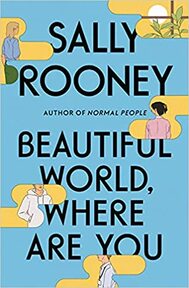 Volume XI Contemporary Fiction Recs, Part 2 1. Beautiful World, Where Are You, Sally Rooney New release alert! Sally Rooney’s much-anticipated third book just hit the market a few weeks ago and has proven to be an instant best-seller around the world. This erudite 30-year-old writer took her evocative title from a 1788 Friedrich Schiller (best known for “Ode to Joy”) poem, reflective of the larger social questions the narrative poses. Largely an epistolary novel interspersed with Rooney’s sharp, witty narrative, the plot follows two best friends, Eileen and Alice, as they navigate both their own friendship and romantic relationships as they enter their 30s. Set in both Dublin and a small, oceanside Irish town, Rooney criticizes class hang ups and late capitalism in Ireland all while asking the question: is it moral for one’s focus to be on what’s beautiful in life instead of what’s wrong? But don’t expect Rooney to hand over the answers—instead you’re given a tenderly wrought story of complex connections that lets each reader experience their own answers as they’re drawn through. (Note: this one comes highly recommended by our Office Manager, Devon, but you can read a more critical review of the book here.) 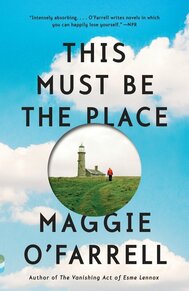 2. This Must Be the Place, Maggie O’Farrell Maggie O’Farrell’s 2020 book, Hamnet, was considered one of the best books of its year (by more or less every literary outlet,) but as it was set in England instead of Ireland, we’re here with another one of this beloved Irish author’s works. This Must Be the Place is instead set in rural Donegal and is considered to be O’Farrell’s “breakout book” that placed her on the contemporary literary map. The novel follows two Americans building quiet lives (mildly in hiding) for themselves in the Irish countryside—former linguistics professor Daniel and former (famous) actress Claudette. Through multiple, time-hopping (but easy to follow,) and dynamic storylines, the reader is treated to a tantalizingly slow reveal of the character’s inner conflicts and pasts as they hurtle toward what may or may not be predetermined fates. Take it from NPR’s Heller McAlpin: O’Farrell’s “fascinated by women who refuse to conform, by the secrets withheld even from our nearest and dearest, and by the unpredictable, serendipitous nature of life, the way a chance encounter can change everything and come to feel inevitable.” As the joy is in the discovery here, we won’t say anymore! 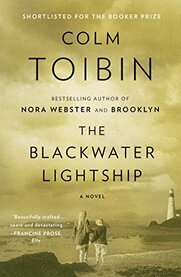 3. The Blackwater Lightship, Colm Tóibín Best known in the U.S. for his 2015 book, Brooklyn, (and the award-winning movie adaptation starring Saoirse Ronan) about an young, female Irish immigrant in New York in the early 1950s, Tóibín’s body of work has several overarching themes: the Irish identity versus personal identity, the creative process, and the self when confronted with loss. The Blackwater Lightship, one of his 3 “Wexford” novels, is no exception, inspired by the death of Tóibín’s own father and his own childhood home of Enniscorthy. Set in Ireland in the trouble-filled 1990s, this is a family story—of family lost, family found, and family chosen—concentrating on three generations of estranged women confronting the untimely, upcoming death of a beloved brother, son, and grandson. With a light hand and sparse prose, the narrative is an exploration into forgiveness, memory, and the seeming impossibility of a future beyond loss, backdropped by the Irish sea. The novel was short-listed for The Man Booker Prize in 2014 and adapted by Hallmark into a made-for-TV movie of the same name (though possibly not set in Ireland as it’s starring, of all people, Dianne Wiest and Angela Lansbury.) While we’d recommend the book, jury’s out on the movie version. 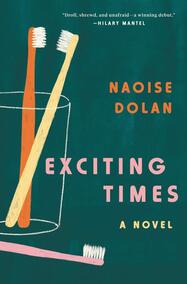 4. Exciting Times, Naoise Dolan While Dolan’s novel may be set in Hong Kong, it’s still a definitively Irish novel. Narrator Ava, a Dublin-born ex-pat, is in her early 20s, directionless and in China teaching English to the children of rich natives. When she meets English Julian, a well-off and highly educated banker, she embarks on a strange and ill-defined relationship that will change the way she sees herself and the world around her. Then…enter Edith (Hong Kong born and bred,) and things get even more complicated. Similar to Rooney’s exploration of personal relationships as a gateway to larger, societal issues, Ava’s experiences are given to us as a representation of the worldwide experience of the Irish diaspora and the perception of the Irish identity outside of Ireland. Deftly avoiding love-triangle tropes with her equally deadpan and witty prose, this is Dolan’s debut novel. (Note: this is another personal recommendation from Devon, but the reviews have been divisively both for and against—it’s an either you love it or hate it kind of book! But we’re a fan of Vogue’s summation: “This debut novel…is half Sally Rooney love triangle, half glitzy Crazy Rich Asians high living—and guaranteed to please.”) 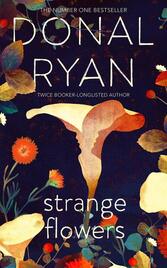 5. Strange Flowers, Donal Ryan Winner of An Post Irish Book Award Novel of the Year in 2020 and set in Tipperary in the 1970s, the story opens upon Paddy and Kit Gladney’s discovery that their 20-year-old daughter Moll has disappeared with a suitcase and without a trace. Five years pass in a blink, and just when the couple is coming to terms with their loss, Moll returns with as little an explanation as she left with. This family story of seclusion, secrecy, and class hierarchies within Irish villages has an idyllic, almost hermetic backdrop that belies the tumultuous country it resides it, instead concentrating on the turmoil within his character’s hearts and relationships. Donal has been twice long-listed for the Man Booker Prize, but many reviewers claim that this, his sixth book, is his best to date. (Here’s a more in-depth review to peruse!) This post is part of a series. Read our last Modern Ireland post, all about Irish language in Irish schools, here. Check out the blog every Monday and Thursday for more posts about Irish history, dance culture, community news, and spotlights on our dancers, staff, and families—among other fun projects! And don’t forget to dance along with us on both Facebook and Instagram.
0 Comments
Technique Review: Posture What does the word “posture” conjure for you? A young lady at finishing school balancing books on her head? Well, if you’re an Irish dancer you might have a different answer! When most people think about “posture” for Irish dance, the first thing that comes to mind is the unique form Irish dance utilizes: an unmoving, straight spine as their feet are flying. But good posture isn’t about just not moving your upper body—there’s a lot more to it than that! Good posture in other forms of dance is a little simpler than Irish dance (what isn’t,) with the term generally referring to an alignment of the spine and body—from the top of the head through the heels. Good posture isn’t just about correct technique--it’s about putting the least amount of stress on your ligaments, muscles, and body in general while performing an activity. There are benefits to maintaining good posture, whether or not you’re a dancer—less wear on bones and joints, decreased back pain and spine issues, and helps prevent muscle fatigue—but for dancers the stakes are even higher. Not only will the adjudicators notice incorrect posture (and dock you!) but maintaining a correct posture while dancing can also help prevent injury. With back pain as one of the most common complaints for dancers across disciplines, the best option for avoiding it is maintaining proper posture from the get-go to lessen the strain! But posture for Irish dance goes beyond standing up straight—it’s all in the arms! To get into the right posture for Irish dance, first stand with your spine straight, heart up (make sure to avoid arching your back and pushing out your ribs!), and push your shoulders back as far as you can—ideally until your shoulder blades touch at your spine! Try it at home, parents—it’s not comfortable, is it? It’s not any way to go about your day to day, but it’s the standard, required posture for solo Irish dance. And that’s not all! The arms need to be kept completely straight to the sides, hands always in fists. It’s a lot to remember while also remembering those steps! 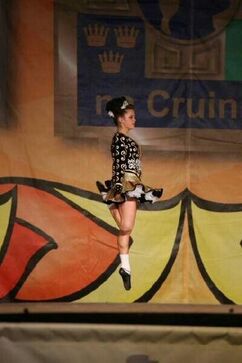 Issues with posture tend to stem from dancers not holding the correct amount of tension in their bodies. Too stiff and your movements will become jerky and awkward versus smooth and graceful. Too loose and the upper and lower body won’t appear to be in sync. Either of these issues encourage the biggest mistakes we see with Irish dancer posture: shoulders rolling forward (think what your dancer looks like hunched over their phone all day,) loose and untamed arms, bent arms, or arms pulling away from the body. But how can we encourage correct Irish dance posture? A technique we like to use in class (but can easily be utilized at home as well!) is pinning rubber circles (or paper plates) between the elbow and the ribcage. If the arm comes away from the body at all, the plate drops! This is a great way for your dancer to practice their feis performances—muscle memory is everything. The other key is core and upper body conditioning. A strong core and arms allow the position necessary for Irish dance to be held, even while the feet are constantly moving. There are so many exercises and tutorials available to help your Irish dancer with their posture! Miss Courtney suggests lateral pulses, shoulder rows, “dead bugs,” superman pulses and holds, and any core work at all! For our littlest dancers, egg rolls (and the paper plate trick) are the best starting point. Wherever your dancer starts from, these exercises and practices will not only improve their dancing, but help with their overall back health—whether they keep dancing or not! Tune in next time for a more advanced technique review, but a pivotal one as your dancer continues on their Irish dance journey: height on toes! This post is part of a series. Take a look at our last technique review, all about crossing, here. Also: check out the blog every Monday and Thursday for more posts about Irish history, dance culture, community news, and spotlights on our dancers, staff, and families—among other fun projects! And don’t forget to dance along with us on both Facebook and Instagram. 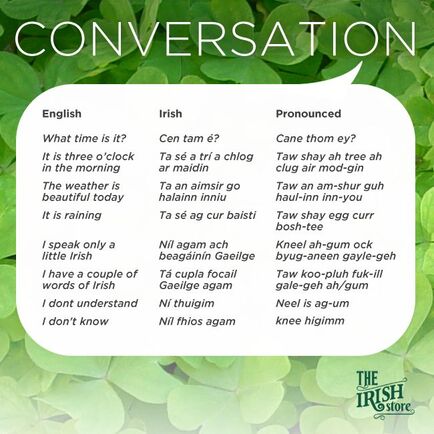 Some common phrases to help your own studies! Some common phrases to help your own studies! Volume X Part 4: Gaeilge/Éire It’s easy to forget that in Ireland people once mainly spoke, well, Irish. The Irish language, Gaeilge (also known as Éire or Irish Gaelic to differentiate it from Scottish Gaelic,) is the official language of Ireland (definitely not English.) Old Irish is considered the predecessor of all the Gaelic tongues, dating back at least 2,500 years (with its first known use in the Roman alphabet dating to the end of the 6th century—making it the oldest known written vernacular north of the Alps.) However, with the suppression of Irish culture by the British beginning in the 11th century, much of the original use of Irish was lost as English became the predominant language in governmental and legal affairs. By the time of The Great Famine from 1846-1848, Irish as a language was almost extinct. However, the Celtic revival and resurgence of the national Irish identity in the 1800s lead to increased interest in Gaeilge, lest it be forgotten. In 1897, the Society for the Preservation of the Irish Language was founded, and they were able to help reintroduce Irish into all levels of education—from primary to university. An official standard of the Irish language was set by the Irish government in 1958—though, the 2016 census reported that in modern times only 1.7% of the population speak Gaeilge daily. But what does this have to do with school life in Ireland? Quite a bit! Under current educational statutes, all students attending government-funded schools in Ireland (both primary and secondary) have a state-mandated Irish language curriculum. That means, in Ireland, you’re learning the country’s original language from at least first grade onward! In recent years, the requirement for a passing grade in Irish Gaelic for a graduating senior’s Leaving Certificate (see our previous post to have this better explained!) has been eradicated—meaning you still need to take the class, but aren’t tested on it as you will be for other subjects. This has caused some controversy within Ireland, as students argue that once they’re past primary school, Irish is no longer taught to them as a living language—it’s more a subject to get through. In fact, while only 5% of polled students said they thought Irish was properly emphasized as part of their cultural heritage, 67% of students believe that Gaeilge should be compulsory and further pushed as part of the country’s cultural heritage. But there are places where Irish continues to exist as a living language: Gaeilge-only schools! They’re called Gaelscoil or Irish-medium schools (while the majority of schools remain English-medium,) and while they can be hard to get into, they are completely immersive. While English is sometimes spoken in school as well, the primary language remains Irish throughout schooling. Parents often chose to send their children to a primary-level Gaelscoil and a standard secondary school, though secondary-level Gaelscoil have become more popular in recent years. While most parents cite language-acquisition and the importance of Irish culture and identity for choosing an Irish-medium program, there are other notable benefits that come with being bilingual: better academic performance overall, improvement in cognitive function, improved communication and social skills, and increased ease in learning third or even fourth languages. Like most topics that touch the political sphere, there’s plenty of controversy about Irish language requirements—most recently, primary school principals calling for a waiver of a Leaving Certificate qualification in Irish in due to a lack of suitable candidates (it’s not required, after all!) But the fact remains that Irish truly is a living language—just take a look at any government street sign, the average Irish person’s name, or innumerable place names and slang terms that still retain their Gaeilge roots. And then there’s the Gaeltacht areas of Ireland! These are places in Ireland where Irish remains the majority language, and they still exist today. Most of these areas dot the west coast of Ireland’s peninsulas where the language was protected by their remote locations. Though all that schooling might not prepare an Irish student for a conversation—while there’s a government-standard Gaeilge, there’s also three distinct dialects in the county: Ulster, Connacht, and Munster!
Where you fall on the bilingual debate? Immersive, required, or at parent and student discretion? Let us know in the comments! This post is part of a series. Take a look at our last modern Ireland post, all about university in Ireland, here. Also: check out the blog every Monday and Thursday for more posts about Irish history, dance culture, community news, and spotlights on our dancers, staff, and families—among other fun projects! And don’t forget to dance along with us on both Facebook and Instagram. So, your littlest dancer is finally through their transition period and back into the school year schedule, but the burnout hasn't seemed to stop for your teen. What's going on with them? Is there too much stress or not enough structure, do they now dislike all their favorite activities or are they just...a teenager? Most every parent is grappling with the constant ebb and flow of their kid's moods during this time in their life, and it's no surprise—they're figuring out who they are. There's no easy answer to any of your questions flat out, but we're here to help keep you better informed about the whys of these mood shifts and interventional tactics to help start conversations that help solve problems rather than start arguments. So what is the current generation facing? Between the pressures social media puts on their self-esteem, cultural shifts, concerns about the environment, the continuing pandemic and its linked uncertainty, complex and divisive political upheavals, increased academic competition and expectations, and the time-honored teen stresses of bullying and peer pressure—the truth is, they may be dealing with more than any generation before them. Not only that, with our exponentially and rapidly changing world, the classic complaint of parents just don’t understand is also likely more true than ever. It’s easy to see how everything, sometimes even the littlest thing like heading out to their favorite dance class, becomes an argument—teens today are dealing with a lot of adult issues and stresses a lot earlier than past generations, and it must be overwhelming! You can couple that with the fact that the teen brain and the adult brain are biologically different. Fully developed, adult brains generally come at problems with the rational, empathetic, long-term considerations of the pre-frontal cortex, while teen decision-making stems from the emotional amygdala—this explains why they can’t always explain why they reacted the way they did…it’s possible they literally weren’t thinking, just feeling. But this doesn’t make your teenager any less intelligent. The truth is, that while they’re still learning, the brain’s ability to formally plan, abstractly reason, and memory retention in general is done developing by 15 or so—if asked about a situation hypothetically, they can respond as any adult might. The issue stems from a mixture of amygdala-based reactions in the moment and the laundry list of increasing and changing hormones (one example: the adolescent male brain is producing 10x the amount of testosterone it previously was!) But do you do about it? First off, expect it! It can be shocking when your sweet, well-behaved kid turns depressed, angry, or apathetic, but coming at it from a place of understanding is the best way to model healthy ways to deal with those feelings. As adults, we know that sadness, anger, and apathy don’t exist in a bubble—those feelings are the product of different stresses and chemical combinations in an individual’s brain. For example, generally, the problem isn’t that you asked them to load the dishwasher, the problem is something that happened at school, how much homework they have, etc. It can be extremely difficult not to react in a negative way to someone slamming doors and yelling, but taking the time to help them express that anger in a healthy manner (i.e. finding the root cause of it and helping them work toward solutions, looking at scenarios and their consequences together, and practicing techniques (breathing, exercise, talking through it, writing it out, ec.) to help them deal with their emotional upheaval,) models better ways to deal with stress that will follow them into their adult lives. Communication, like anything else, is the kind of skill that takes practice—especially when it comes to its give and take nature. One of the easiest ways to slow down a meltdown (or get your teen to talk) is to ask them a simple question that can help put expectations on the interaction for both parties: Do you want me to listen, or do you want me to help you find a solution? There’s plenty of ways to make sure your dancer knows you care about them and the way they’re experiencing the world, but listening to what they need from you when they’re experiencing high emotions may be the best one. It not only continues to model healthy emotional behaviors, but puts your trust in their ability to know what they need, validates their emotional life, and lets them trust their self. It’s a step toward emotional independence and it puts the interaction in their hands—giving them concrete decisions to make while their amygdala is rioting.
But listening doesn't mean giving in to every demand--innumerable studies show that teaching your teen to honor commitments and keep to a schedule can help in every area of their life. From academic success to personal integrity and an increase in self-confidence and easier adjustments to adulthood, it's all about learning to be a responsible person in a safe environment. It also helps them become more empathetic and community-minded (i.e. my choices effect others) in a time in their lives it's easy to revert to an inward-facing gaze. Another equally important aspect? Exercise! Everything listed above goes for exercise too! Not only does exercise have academic, physical, and emotional benefits, it helps create healthy, lifetime habits in your teen. It's all a balance between their wants and their needs, with their parents the best judge and lead how to balance these sometimes conflicting desires. Like we said at the beginning—there’s no simple answer to how to be a parent of teenagers, and it’s not always going to go well. You can help encourage them keep to their commitments, to keep a schedule, to exercise, to get enough sleep, to eat healthy, as well as support them and let them know you believe in their resilience, intelligence, and abilities, and they could still be the same moody, anxious teenager. But, the key really is the listen half of communication—when your child is looking to drop a favorite activity, for example. Is this stress and pressure and too much going on for them? Or is there something else underlying the decision? Have they changed and want to pursue something else and have thought through the consequences of the change…or are they reacting emotionally because of something else? The only way to know is to open up communication and truly hear what they have to say. This post is part of a series. Check out our last 411 post, all about back to school burnout for your younger dancer, here. Check out the blog every Monday and Thursday for more posts about Irish history, dance culture, community news, and spotlights on our dancers, staff, and families—among other fun projects! And don’t forget to dance along with us on both Facebook and Instagram Volume X Part 3: University The thing about Irish dance is that it’s more than dance—it’s a cultural art form that incorporates traditional music and even lore into its performance. And the thing about Irish dancers is that they tend to not only fall in love with the dance part, but all of it, the entirety of Ireland. For many parents the idea of your dancer flitting off across the Atlantic for college (sorry, university) is a terrifying one (though Miss Courtney completed her entire degree—in Irish dance and music no less—in Limerick, and Miss Devon studied abroad for a full year in London. We promise we called home a bunch!) But for many Irish dancers, it’s the dream—so we’re here to tell you a little bit about university in Ireland! First off, it works a little differently to a typical U.S. college: to start, undergraduates don’t apply simply to the school of their choice, but to a specific course of study within that school. It’s essentially like deciding your major before you get in! While some students also take on a secondary, usually related course of study, all your classes revolve around the specific department you’re in or, as they would say, course that you’re on. These courses of study are also typically shorter than the U.S. with the standard for general study being three years (though some programs are four and others, say medicine or architecture, can take up to five, though some include post-graduate work.) The way teaching itself is approached can be a bit jarring for American students, too, as the structure can seem a bit loose compared to what we’re used to. Most U.S. colleges would be considered overbearing to the typical Irish college student, with each class typically having a large number of assignments and tests that determine your grade with strict and direct instructions. Irish higher learning has a completely different pedagogical philosophy that concentrates more on critical thinking and relies less on the number of assignments and more on the quality of your work. While this can be a difficult adjustment for Americans, it works well for disciplined students as it fosters independent thinking and the ability to take initiative. While no real rubric can be a learning curve, we speak from personal experience when we say that professors are generally extremely helpful and mindful of that adjustment period! But the differences don’t end there! Grading in Ireland (and the UK in general) can be a bit of heart-stopping surprise—the scale, instead of 0-100, is 1-70 (though you can receive up to an 80 on an assignment, sometimes. It’s unclear when, as it largely seems to be at the professor’s discretion.) That means a 65 isn’t a D, but an A or even an A+, though Irish schools don’t use a letter grading scale. Instead, 70 or above is considered a First Class Honors, 69-60 an Upper Second Class Honors, 59-50 a Lower Second Class Honors, 49-45 a Third Class Honors, and 44-40 a Compensating Fail, i.e. the lowest technically passing grade. However, each school’s scale is slightly different, with many professors viewing a 70 or above as something students should be working all three years toward—meaning many won’t award high grades to first year students, wanting to see them progress toward that “perfect” goal. The cost is another huge difference, especially you’re an Irish citizen. Getting a bachelor’s degree in Ireland at one of the state’s universities is free for Irish citizens, citizens of any EU/EAA countries, and Swiss citizens. Just last year the Irish government committed 11.1 billion EUR into its educational system. But what’s the cost like for American students? The average American student’s education (BA) in America will cost them between $35,572 and $120,376 (depending on the school and if they graduate in four years—and remember these are the average and only includes tuition, not room and board, books, plane tickets, etc.) The average cost for an American student in Ireland is 18,000 EUR ($21,231) to 36,000 EUR ($42,463.) Two points here: not only do the fees have a smaller range (and are less subject to change,) the most exorbitant possible cost is less than $10k more than the average cost of the least expensive college option in the U.S. With the average student debt in the U.S. coming up as approximately $29k, an Irish education might be saving you and your dancer money in the long term. (Check out some more detailed cost of living stats here.) Then you get down to your choices—and there’s a lot of them! For a small country, Ireland has a staggering number of schools to choose from, with seven governmentally-funded universities, a number of institutes of technology (which include a wide range of vocational courses,) colleges of education, and private colleges—many if not all of which offer a similar level of tertiary degree. These universities (Dublin City University, National University of Ireland, Galway, University of Limerick, Maynooth University, University College Dublin, University College Cork, and Trinity College Dublin) are the ones most similar to a U.S. state school. However, the term “state school” can leave an underwhelming impression, while the truth is that Ireland’s universities all rank within the top schools in the world--Trinity College Dublin, for example, was founded in 1592 as an Irish answer to Oxford and Cambridge.
All in all, there’s a ton of positives to higher education in Ireland. Between shorter courses of study, a teaching pedagogy that encourages independent thinking, a grading system that encourages progress over perfection, more affordable costs overall, and plenty of high-quality choices—there’s not much to complain of beyond the distance. So sure, if your dancer wants to head to Ireland at 18 it’ll be a long flight to see them—but they could also be exposed to a culture they’ve been invested in for their entire childhood, with benefits galore! This post is part of a series. Read our last Modern Ireland post, all about primary and secondary school uniforms, here. Check out the blog every Monday and Thursday for more posts about Irish history, dance culture, community news, and spotlights on our dancers, staff, and families—among other fun projects! And don’t forget to dance along with us on both Facebook and Instagram. 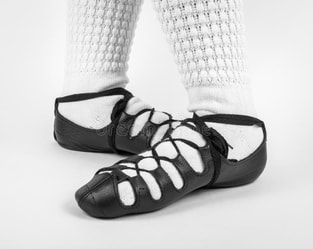 Last time, we took a look at the importance not only of turnout for the sake of technique and aesthetics, but for the safety of every dancer. This, of course, extends to other aspects of technique, including: crossing. Whether you’ve been dancing one year or twenty, crossing is one of the most basic techniques to master, as it’s the beginning and end position to any Irish dance move you might perform—one leg in front of the other. To determine what state your crossing technique is currently in, first turn out your feet (which we covered last week!) Then, starting with your heels still together, move your right leg in front of your leg without shifting the position of your turned-out foot, knee, or hip. The first goal is get your right heel touching your left toes. As you improve your turn out, the next goal would be getting your right toes to touch your left heel in the same position (with your right foot still in front.) This is the ultimate crossing goal in the Beginner and Early Intermediate levels, along with getting that first progression in every movement! As you move on to the highest grades of Irish dance, you’ll want to increase your crossing ability. To do this, you’ll want to keep moving your already crossed feet further apart—your left leg further to the right and your right leg further to the left—until you can’t move them any further. The goal for the best possible technique in Irish dance would be as much space between your shins as possible while you’re in a crossed position. However, it’s important to keep body alignment in mind when crossing, as the act of crossing can often lead to dancer to be facing diagonally instead of straight ahead. If this is happening, you want to correct yourself into a less turned out or less crossed position where you belly button is facing forward. A study of dancers across disciplines from the Clinics in Podiatric Medicine determined that 53% of dance-related injuries are of the ankle or foot (with a higher proportion in Irish dancers--83% in this specific study) citing lack of proper body alignment as one of the primary sources of said injuries. Crossing your feet may seem like no big deal, but as all jumps in Irish dance are expected to begin and end in this position, correct crossing technique is imperative to a dancer’s health and safety. Research from BYU in 2017 asserts that Irish dancers land with a force of 4.5-6 times their body weight, making proper technique while jumping one of the easiest ways to avoid injury. With the effects of dance shoes across disciplines being a relatively new area of study in sports medicine, mitigating this force with proper technique becomes paramount. There are many exercises to help improve your crossing technique, and some of Miss Courtney’s favorites include cross walks up to the mirror (to be able to see your alignment all the better—make sure to always practice with proper technique, it’s the only way to improve!), as well as floor butterflies to increase the strength in your inner thighs and glutes. Take a look at our last post in this series to see a few exercises that will help increase your turnout, too—turnout is important in every aspect of Irish dance, including crossing! The better your turnout, the better technique in your crossing. Miss Courtney also recommends mental cues while dancing to help you remember to both start and end in the correct position, such as “keep only one knee showing” or “keep space between your shins.” While the longer you dance, the more muscle-memory will kick in (read more about movement memory here!), it’s always good to have the mental cues tied to those muscle memories to reinforce this basic tenet of technique if you ever get flustered. It could save you from injury, and will wow the adjudicators! Tune in next week for another technique review—all about posture! This post is part of a series. Take a look at our last technique review, all about turnout, here. Also: check out the blog every Monday and Thursday for more posts about Irish history, dance culture, community news, and spotlights on our dancers, staff, and families—among other fun projects! And don’t forget to dance along with us on both Facebook and Instagram. Volume X Part 2: Uniforms Last week, we took a shallow dive into how the Irish school system works, grade to grade. But we all know the most fascinating part is the human interest bit: so what are Irish school kids experiencing? More specifically: what are they wearing day to day? Since the United States isn’t big on uniforms, it can be a bit of a shock to see the universality of the school uniform in Ireland—a mainstay since medieval times. Let’s learn more! The school uniform has a long history in Ireland, but the image you have in your head of a blazer with a crest and a matching tie isn’t quite where it started. While the history of the Irish educational system is a complex one—from bardic schools in medieval times to the repressive hedge schools of the 18th century—our first solid records of what Irish school uniforms actually looked like come out of rural Ireland in the first few decades of the 20th century (thanks to invention of the camera!) Before WWI, boys were generally the only ones receiving much of an education and wore long shirts (dresses, really) called petticoats, with a short coat (similar to the brat you’re still allowed to wear for Irish dance.) Petticoats are similar to both the ancient léine or tunics worn in ancient Ireland, a precursor to the kilt. This is our best look into the past uniform of the monastic schools that dotted Ireland years before! After petticoats went out of style and until the 1980s, younger male students wore shorts and knee socks with a blazer, button down, and tie until 12, 14, or even 16 depending on the school and parental preferences. Getting to wear pants to school was considered a sign of manhood within the community, and while this is now considered outdated, the wearing of a school uniform (often with the crest of the school) is still considered a way to help students feel they’re part of said community. It’s often cited as a reason to keep uniforms up through college, as the wearing of the school colors and crest can create camaraderie and school spirit, lets the students see their place as a part of something larger than themselves—possibly increasing empathy. (Fun fact: that's the same reason SRL has its students where our school colors of red, black, and white--why many Irish dance schools do!) It’s just one of the positives cited for school uniforms, with others including: easier to get dressed in the morning, less distracting, less bullying, and easier to enforce for the teachers, among other pros. Female uniforms have transformed the least over time, generally consisting of a skirt or pinafore—with sweaters and button downs for the younger girls and a button down, tie, and blazer for those in secondary (or at least the senior cycle) of school. Knee socks or tights are generally also required. You may have noticed something there...I didn’t say pants. That’s right, at the majority of Irish schools, female students are considered in breach of dress code if they come to school in pants—even if they’re the same pants the male students are required to wear. This had led to a movement in Ireland calling for gender-neutral uniforms across age groups, citing the fact that pants aren’t revealing (in fact, are less revealing than the short skirts that are standard,) and are perhaps less comfortable for many students. Then again, school dress codes have been in the news for years now, with female students protesting the policing of their bodies, and many believe school uniforms are a remedy for that problem. Many parents in Ireland, however, disagree, citing the strictness of the code as an undue stress, particularly for the youngest students. We’re not talking about rules like the fingertip-length skirts and wearing the correct tie—these are more trifling rules, like what color hair tie’s in your hair, that many Irish parents find arbitrary and an unwarranted burden on both them and their student. That’s to say nothing of the cost—while many underfunded schools in economically disadvantaged areas in America have less expensive uniform options, this doesn’t generally follow suit in Ireland. With a tradition of the school’s crest emblazoned upon everything, many Irish people have found the costs prohibitive—especially as a breach of those rules could lead to their student not being able to remain in class to receive their education.
And then, there’s what every kid cites as the biggest negative about school uniforms: a lack of independence and identity. There’s a lot of back and forth about the truth of this, with some saying that wearing a uniform for twelve plus years takes away a sense of independence and makes the transition to adulthood harder. Similarly, Ireland, whose population is currently 12% non-Irish citizens, is also facing backlash over the perceived forced assimilation the traditional Irish school uniform has on students from other countries and cultures. Whether you’re pro- or anti-school uniform, they seem to there to stay in Ireland, especially as their usage across the world increases (and, we have to say, a little kid in a tie is always pretty cute.) Who knows, all our dancers might be heading off to school in a plaid skirt this time next year. Where do you land on the school uniform debate? Let us know in the comments! This post is part of a series. You can learn more about the Irish school system, which we covered last week, here. Check out the blog every Monday and Thursday for more posts about Irish history, dance culture, community news, and spotlights on our dancers, staff, and families—among other fun projects! And don’t forget to dance along with us on both Facebook and Instagram. 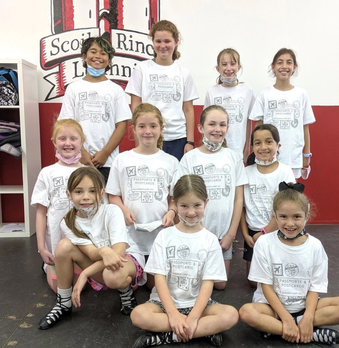 After the fun of an SRL summer camp, it can be hard to go back to routine! After the fun of an SRL summer camp, it can be hard to go back to routine! Read our post on this topic last year, here. Let’s face it: last year was one of the most exhausting of any of our lives, your dancer’s included. Now, as a new school (and dance!) year begins, it will be easier than ever for your dancer (and you) to feel overwhelmed, tired, and just plain burnt out. While adults have to shoulder the challenges of their own responsibilities, our day to day lives have less change month to month, no matter the season. In contrast, kids are learning, changing, and growing every day, making each new school year a completely new adventure—all while trying to figure out who they are in the It’s hard to imagine with the remove of age the incredible stress our dancers go through as they grow in these tumultuous times, and that’s why we wanted to take a moment to talk about back to school burnout. It’s real. It can transform your energetic, happy kid into a someone else: lethargic, disinterested, and combative. And it may be coming to your household soon (if it hasn’t already arrived!) So what can you do to help? The first steps to any problem are always the same: recognize the reality and breadth of the issue, make a plan to help fix it, and stick to the plan. First off, burn out during (and especially at the beginning of) the school year is completely normal, to the point that innumerable psychological studies have researched it. These studies largely agree that not only is burnout a problem across the world, it can negatively affect a student’s academic achievement throughout their lives--so the earlier it’s mitigated, the better. When left untreated, it’s been found to increase a student’s general exhaustion, cynicism, and feelings of inadequacy. It’s never too early to help your child learn how to better mitigate stress, especially as it may improve the quality of their entire life ahead of them. Now that we can see how big the scope of the problem is, let’s focus on how to fix it. Above and beyond all other interventions, exercise has been found to be the best possible practice to combat back to school burnout, across the board. We’d, of course, recommend Irish dance for something that’s a fun, culturally enriching social outlet that helps builds other stress-mitigating habits like goal setting and confidence (read more about Irish dance’s benefits here,) but movement of any kind truly is the key. 2.5 hours—which is less than a half hour a day—of any moderate movement-based activity a week is the standard recommended by medical organizations across the board. Beyond the most obvious reason--physical health—exercise has been proven to help decrease stress and increase endorphins (among other happy-brain chemicals,) as well as boost overall energy and mental acuity. At the same time, exercise classes (like dance!) promote community and social development, while also promoting better sleep habits when your kids get home. So, we have at least one, big idea of how to combat the burnout—but what is that isn’t enough? There’s a ton of tips to integrate into your family’s life from experts all over the world, and it’s all about finding the right combination for you and your family. Here’s a few to try to integrate, but feel free to leave your own, more specific solutions in the comments! 1) Commit to a reasonable number of activities, but don’t say yes to everything. 2) Be flexible, but be clear about your expectations. 3) Keep as regular sleep schedule as possible. 4) Eat a balanced diet. 5) Forge open communication within your family. 6) Encourage asking for help whenever you need it. 7) Put a limit on screen time. 8) Make sure to make time to relax and decompress. 9) Set goals and celebrate achieving them. The last part of the plan might be the most important: whatever plan you make, stick to it! The literature is clear on this: kids thrive when given a routine to follow. Simply put: the big, big world becomes a little less overwhelming when you help your dancer understand exactly what’s coming next. And it won’t just help now: regularity in daily and weekly routines has been proven to produce better adjusted and more successful adults across the board, in all fields. Other benefits include improved attention span and self-control, better time management, decrease in anxiety, better social skills, a higher level of emotional intelligence, better academic performance, and even increased employability in adulthood (among others.) Routine is like building a structure for your child to grow into—it’s up to you to determine what that structure looks like. And, just as importantly, don’t forget to include yourself here too! Adults spend so much time taking care of others, it’s easy to push our own wellness to the back--but a parent’s mental health has been determined to have a direct effect on their children. Fighting against that burnout is a family endeavor, and all the above tips apply to our SRL parents as well! We look forward to seeing you all back in the studio, hopefully armed with some tips to make the transition as smooth as possible for the entire SRL community! This post is part of a series. Read our last 411 post, where our dancers tell you why they love SRL in their own words, here. Check out the blog every Monday and Thursday for more posts about Irish history, dance culture, community news, and spotlights on our dancers, staff, and families—among other fun projects! And don’t forget to dance along with us on both Facebook and Instagram. |
SRL NewsFind all of our latest news on our Scoil Rince Luimni Facebook page! Categories
All
Archives
August 2022
|

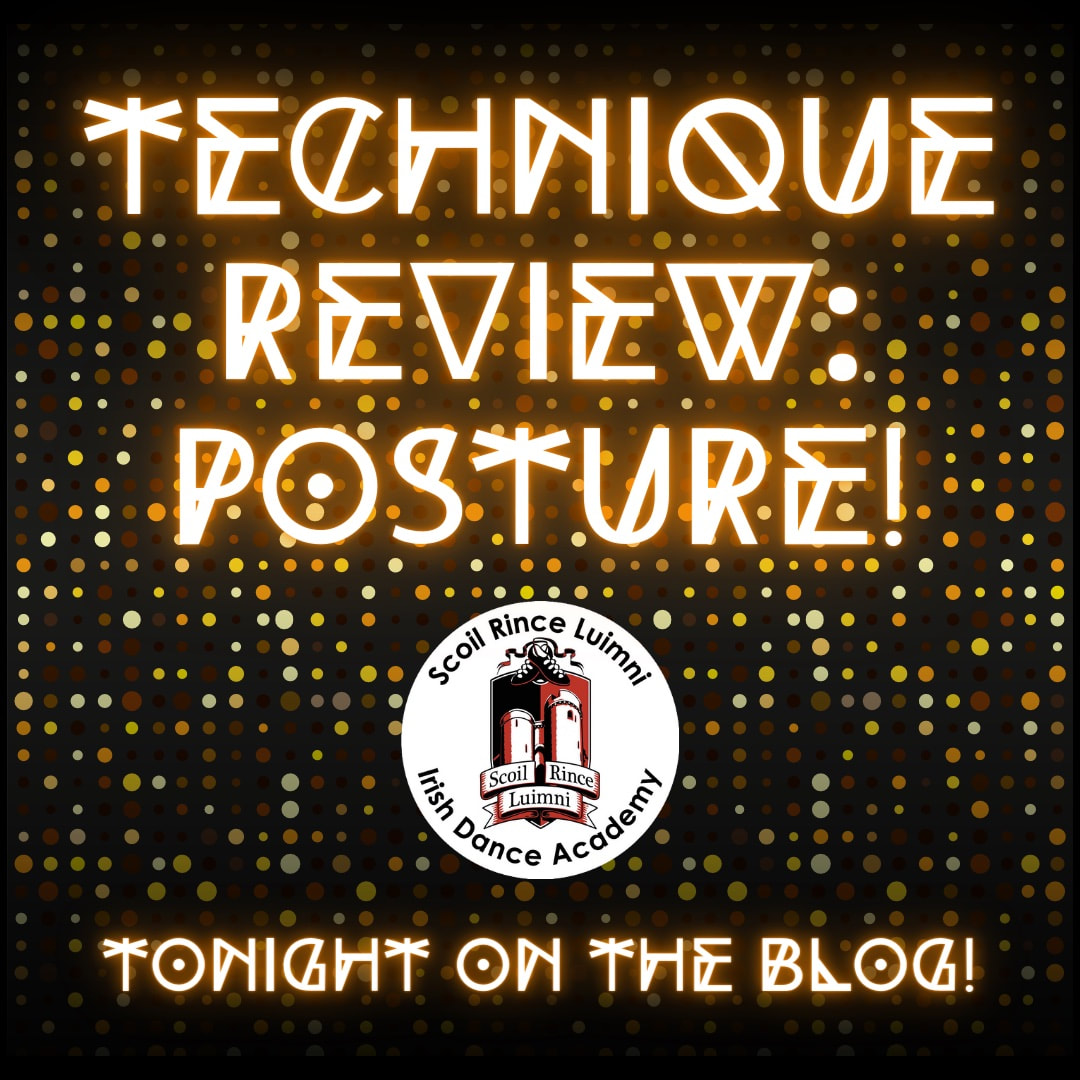

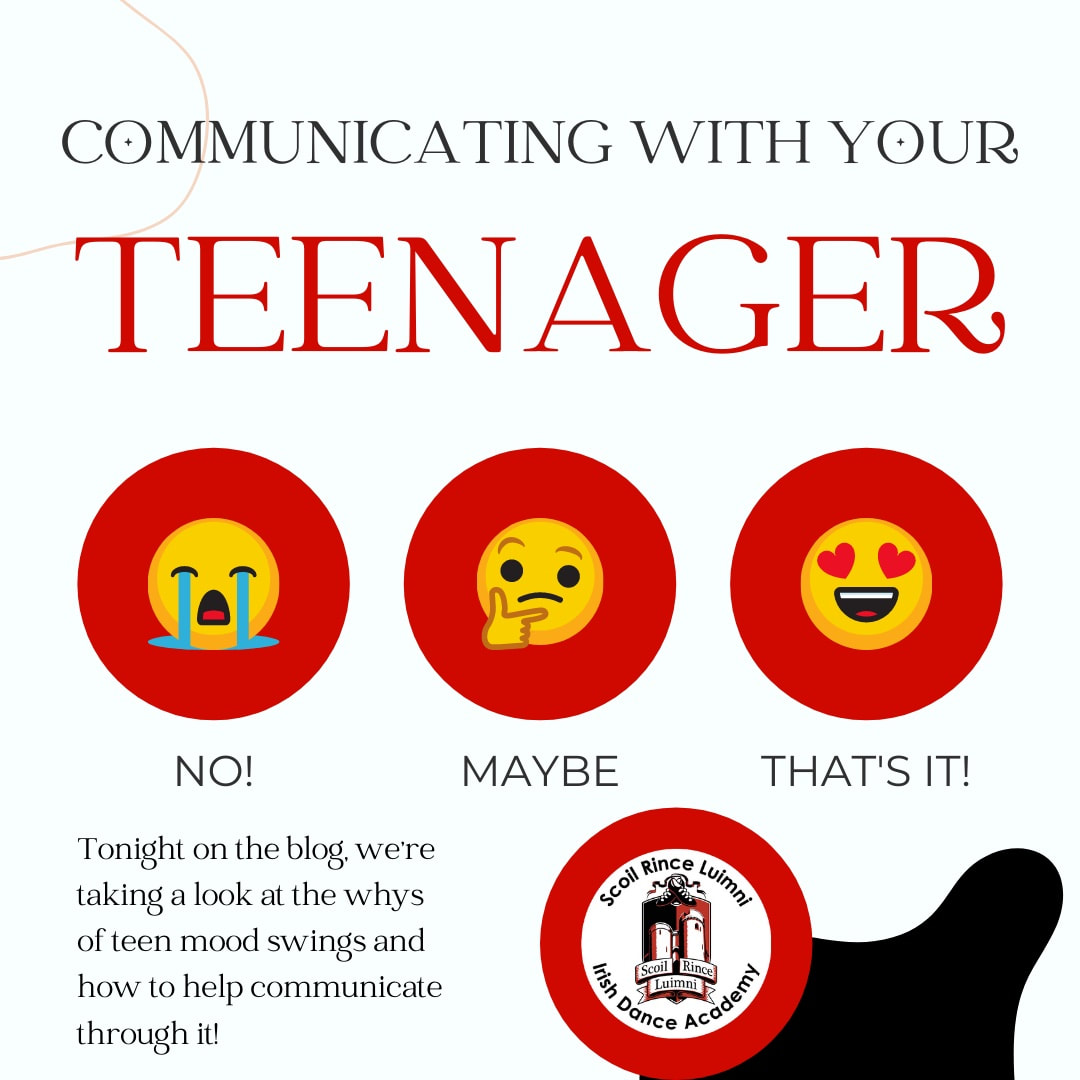
 RSS Feed
RSS Feed